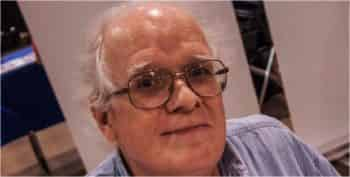Le personnage vit à travers ses choix
John Ostrander discute des enjeux de la rédaction d’un récit et il évoque ce qu’il nomme la première loi de Newton d’une aventure. Nous citons un long passage de son propos :
« What is important is not what the character says (or anybody else says about them); it’s what they do. It’s what they choose to do. Their choices define them. […] How do we determine what a given character will do in any given situation? It depends on their motivation. It’s not simply what they want; it’s what they need. It’s not just what they desire; it‘s what they lust for. […] We want something that will drive a character to action and that’s not always easy. Newton’s First Law of Motion states that a body at rest will remain at rest unless an outside force acts upon it, and a body in motion at a constant velocity will remain in motion in a straight line unless acted upon by an outside force. That’s true in a narrative as well. Maybe we’ll call it Newton’s first law of plot. » (« John Ostrander’s Writing Class: Newton’s First Law of Plot», http://www.comicmix.com, March 29, 2015).
Cette observation nous conduit à un commentaire de Darren concernant le personnage de James Bond créé par Ian Flemming : « Ian Fleming originally constructed James Bond as a one-dimensional cypher, not too far removed from the original version of Sherlock Holmes who appeared in the works of Sir Arthur Conan Doyle. Characterisation was often inferred by the reader rather than explicitly articulated by the writer. A lot of what made Sean Connery or Roger Moore’s take on the character so fascinating existing as subtext rather than text. » (« Non-Review Review: Spectre », https://them0vieblog.com, October 24, 2015). Ainsi, si Ian Flemming a fait de son héros une ardoise blanche, il n’en demeure pas moins que ses romans ont eu un succès qui peut se justifier par l’idée de mouvement évoquée précédemment.
On pourrait argumenter que ce type d’option est valable pour les récits d’action. Cependant, nous voyons une autre facette à cette idée de choix, ce que nous avons déjà évoqué : les conséquences. À cet effet, nous pourrions prendre l’analyse que Vikram Murthi fait du personnage de Don Draper : « [Don Draper]’s neither a murderer nor a psychopath, but he also doesn’t share the same motivations and desires with other antiheroes. He’s not on a quest for power or dominance, he doesn’t strive to destroy his enemies, and most importantly, he’s not beyond redemption. While Tony [Soprano] was the devil who lived next door and Walter [White] was the criminal mastermind disguised as your science teacher, Don is a socially sanctioned confidence man hiding his broken interior with a suit. He doesn’t exist on a good-bad continuum. He’s simply a man who wears many masks. […]Mad Men is one of the all-time great shows about self-destructive behavior and the toxic cycles someone falls into when they believe they don’t deserve anything better. » (« Don Draper is no antihero », http://www.avclub.com, March 30, 2015). Don fait continuellement des choix, très souvent des mauvais, et une bonne partie de la série télé est construite autour de sa capacité à les assumer ou non. Par conséquent, le mouvement qu’évoque Ostrander n’a pas à se traduire en des actions surhumaines.





